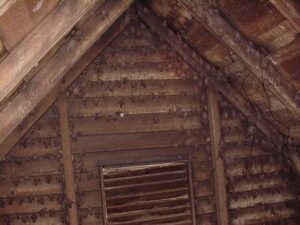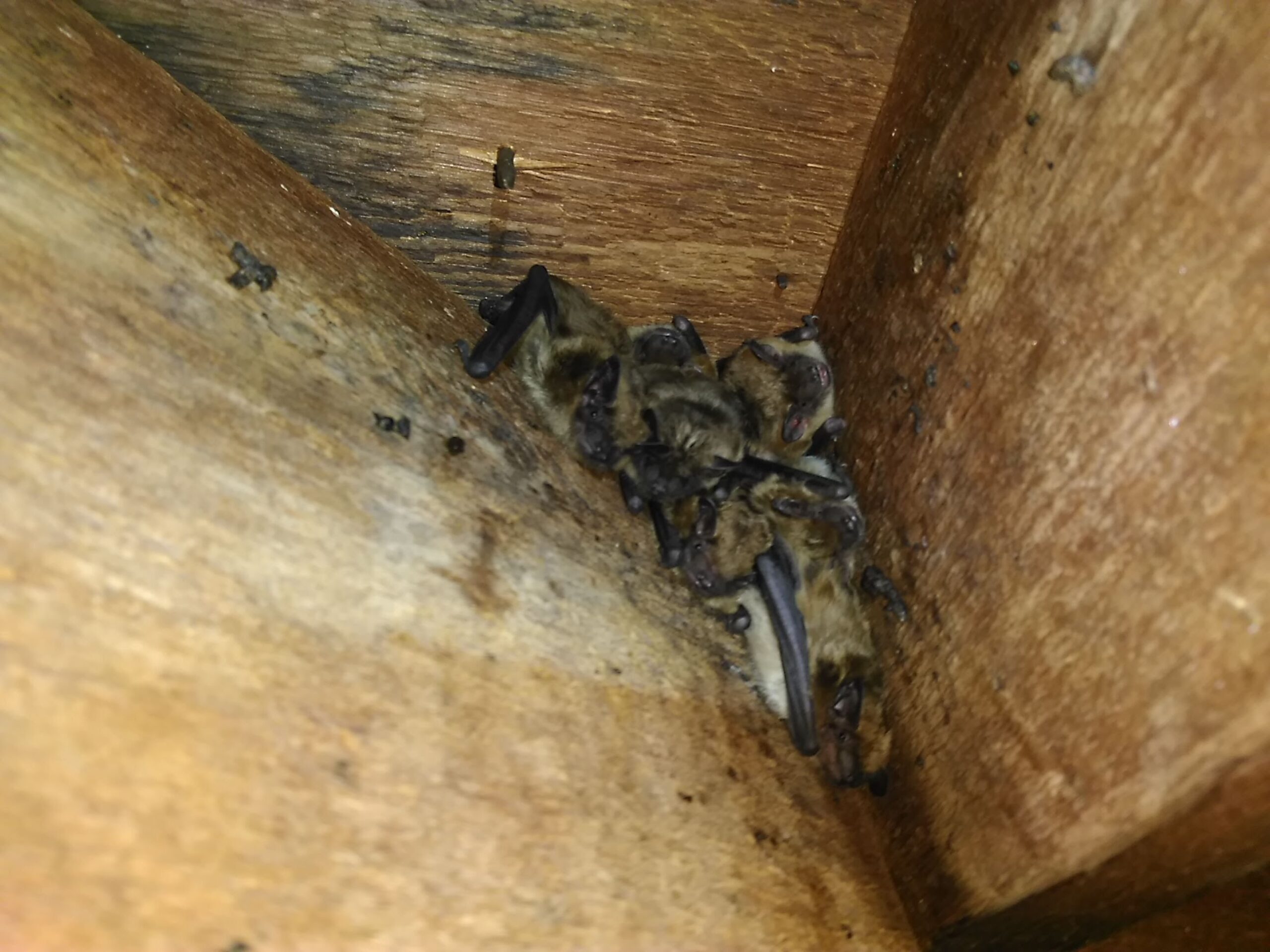What’s a Bat To Do?
Of the eight species in our state, only two are likely to make a home in your attic: the little brown bat and the big brown bat. In natural environments, these little guys roost in caves, where the temperatures are cool and steady and where they’re protected from predators. Your attic is kind of like a cave. It provides similar benefits in temperature and shelter. Bats don’t know they’re invading your turf; they’re just looking for the perfect place to socialize, sleep and raise their little ones. In urban environments, human structures fit the bill. They often enter homes through the chimney or through tiny gaps that provide direct access to the attic. This species is flexible. Though the wingspan of an adult big brown bat can reach 16 inches, bats can squeeze themselves through holes as small as a half-inch.What Are the Odds?
You may have a bat colony in your attic and not know it. Bats sleep during the day and leave their shelter just after sunset in search of food and water. Since they are flying creatures, you won’t hear them scurrying across the attic floor. Though they vocalize, it doesn’t usually create enough of a din to reach through the wood, drywall, and insulation to your ears, particularly with a small colony and especially when you’re asleep. If you have openings in your attic large enough for bats to fit through, the odds are decent that you have bats living in it.What’s a Human To Do?
 Bats are protected species in Wisconsin. It is illegal to capture, injure or kill one, even if it happens to be hanging out in your attic. These fascinating animals are valuable to humans and ecosystems, but you don’t really want them as a long-term tenant in your attic. Though they may be quiet residents and keep to themselves, they can make a mess of things. Bat guano doesn’t smell pleasant, and it also can transmit diseases such as histoplasmosis. It also can eat through wood and degrade metals, so having bat droppings saturating your attic floor is bad for your home too.
Bats also carry rabies. These flying mammals aren’t aggressive. They would rather not have a human encounter. However, like any cornered animal, they will defend themselves. If you spot bats in your attic, don’t assume they’ll leave on their own. They like it there. Instead, contact professionals in bat removal in Milwaukee to take care of the job for you.
They’ll safely and humanely exclude the bats from your attic so that they can continue to live their bat lives outside of your home. Be aware that it is also illegal for anyone to remove bats in Wisconsin between June 1 and August 15, as pups are born in the late spring and are too vulnerable to move before they can fly. Another benefit to hiring bat removal experts is that they can ensure that bats won’t be able to access your attic in the future.
Bats are protected species in Wisconsin. It is illegal to capture, injure or kill one, even if it happens to be hanging out in your attic. These fascinating animals are valuable to humans and ecosystems, but you don’t really want them as a long-term tenant in your attic. Though they may be quiet residents and keep to themselves, they can make a mess of things. Bat guano doesn’t smell pleasant, and it also can transmit diseases such as histoplasmosis. It also can eat through wood and degrade metals, so having bat droppings saturating your attic floor is bad for your home too.
Bats also carry rabies. These flying mammals aren’t aggressive. They would rather not have a human encounter. However, like any cornered animal, they will defend themselves. If you spot bats in your attic, don’t assume they’ll leave on their own. They like it there. Instead, contact professionals in bat removal in Milwaukee to take care of the job for you.
They’ll safely and humanely exclude the bats from your attic so that they can continue to live their bat lives outside of your home. Be aware that it is also illegal for anyone to remove bats in Wisconsin between June 1 and August 15, as pups are born in the late spring and are too vulnerable to move before they can fly. Another benefit to hiring bat removal experts is that they can ensure that bats won’t be able to access your attic in the future.



